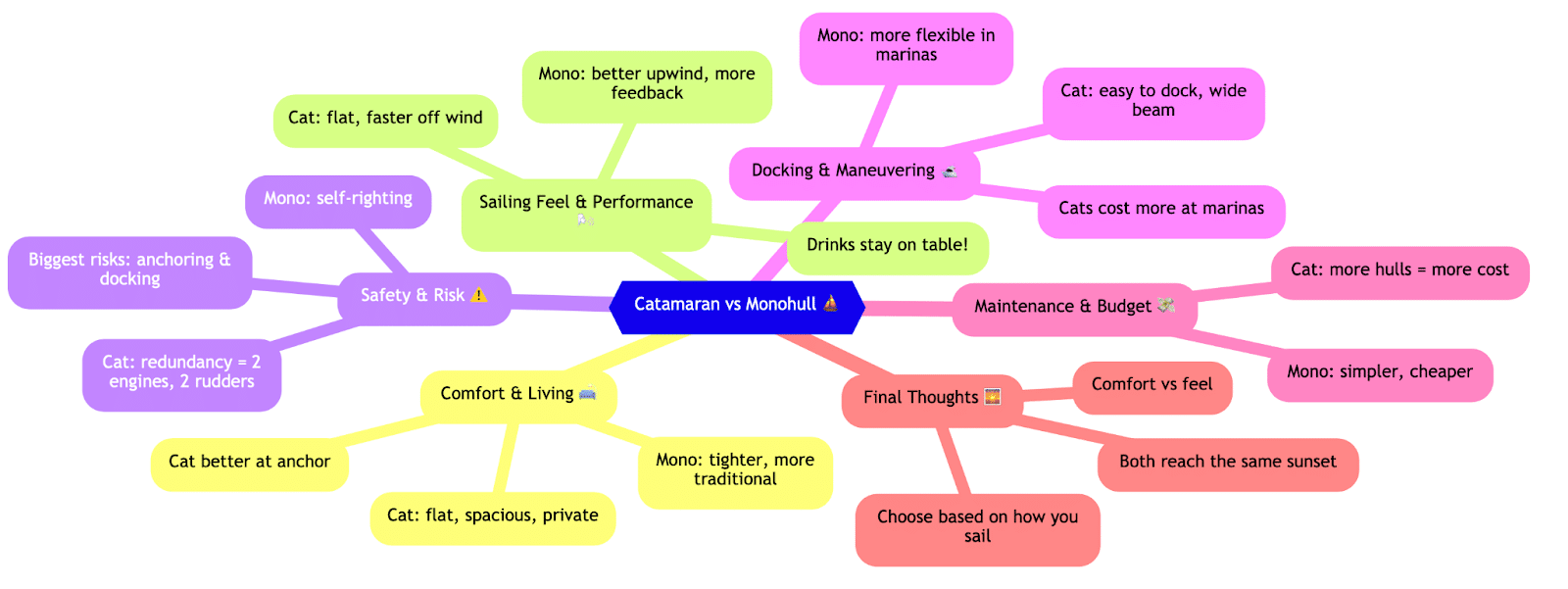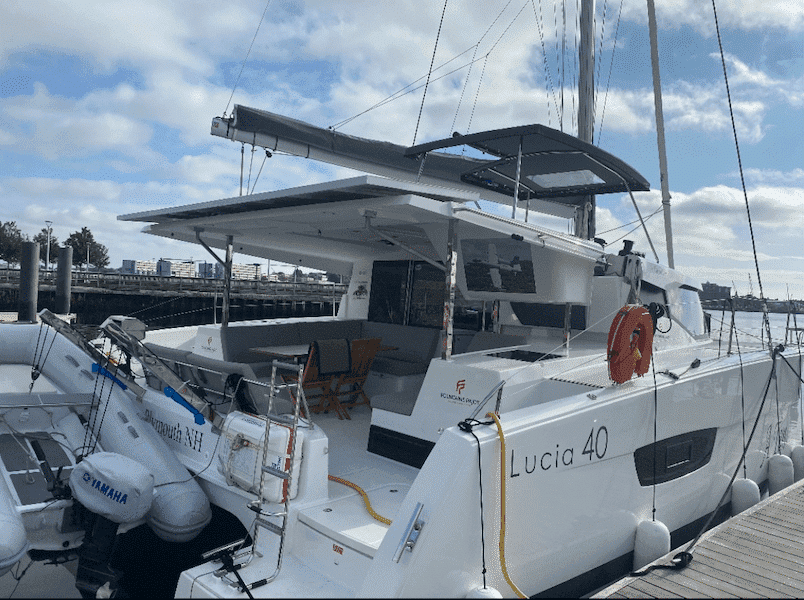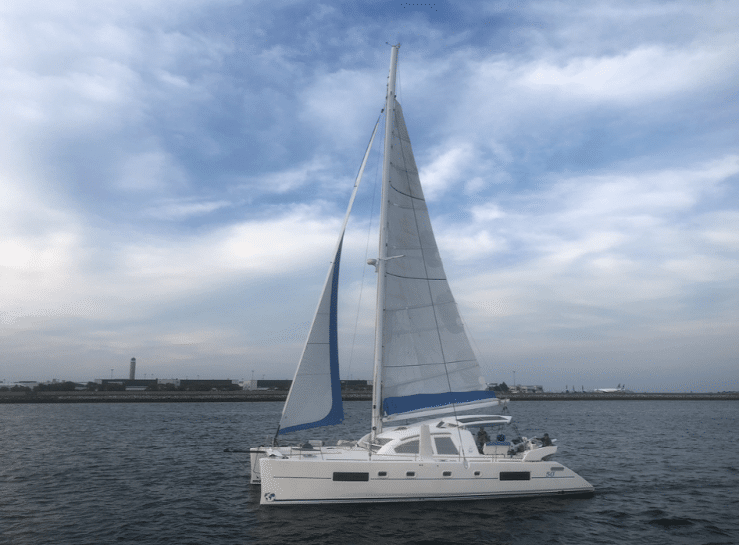Sign up with NauticEd for FREE (no obligation) and receive 2 free boating courses, a free eLogbook and boating resume, and more! If you want to get started in boating or are experienced and want to expand your knowledge and skills, consider taking our many online sailing and powerboating courses.
Catamaran vs Monohull: A Real-World Comparison for Cruisers
This isn’t about which boat is better—because if one truly was, the other wouldn’t exist anymore. It’s about understanding the tradeoffs. Whether you’re buying or chartering, you have to figure out what kind of sailing, living, and exploring you want to do. Let’s cut through the noise and get into the real-life differences between cats and monos.
Comfort & Living Space
Let’s be honest: living aboard a catamaran is just more comfortable. The flat sailing, huge salon, and separate hulls for privacy make it feel like a floating condo. If you’re sailing with family or friends, that space becomes even more valuable—everyone can have their own corner.
Monohulls, on the other hand, have less communal space on deck, and the cabin can feel like a cave if you’re not in a deck salon design. But they can feel roomier down below in terms of floor space—just not as open or segmented.
At anchor, cats win again: they don’t roll side-to-side in the swell the way monos do. If you’ve spent a sleepless night rocking in a mono, you know what I mean.
Sailing Performance & Feel
If your priority is the actual act of sailing, then monohulls still hold the edge—especially when pointing upwind. They heel over, which tells you when you’re overpowered and need to reef. They naturally spill air and are more forgiving of mistakes, which makes them better teaching tools.
Catamarans sail flatter and faster off the wind. But most production cats don’t point well and can feel sluggish if you’re trying to beat upwind. That said, once you try a charter on a cat, you may never want to go back. Sailing flat, drinks staying on the table—it’s hard to argue with that.
Safety & Risk
Let’s address the elephant in the room: no, you’re probably not going to flip your cruising catamaran. It’s not a beach cat. If you’re reefing when you should and keeping an eye on conditions, you’re more likely to lose a rudder or hit a log than capsize.
Monohulls are self-righting, yes, but if your rig’s gone and you’re dismasted in a storm, “self-righting” isn’t fixing much. A turtled cat isn’t ideal either—but that’s not your main risk. Your biggest risks? Dragging anchor, hitting a reef, or docking mishaps. And for the record, cats often have better redundancy: two engines, two rudders, two hulls.
Maneuvering & Docking
Docking a cat in an end tie with two engines and that wide beam? Easy. Docking a monohull with a single screw and tight quarters? That takes skill.
But here’s the catch—catamarans don’t fit just anywhere. Marinas have limited end ties and charge more. Monohulls can often slip into a spot at half the cost. So think about how often you’ll actually be in marinas versus at anchor.
Maintenance & Budget
This one’s simple. Cats cost more. More systems, more hulls, more stuff to maintain. You’ll pay more upfront and more over time.
Final Thoughts
What matters most is how you plan to use the boat. Where are you sailing? How often are you at anchor vs in a marina? How experienced are you—and your crew?
For our family, it comes down to comfort at anchor and space to spread out. If you’re cruising with kids, friends, or just want more elbow room, cats are hard to beat. If you want that classic sailing feel, you’re budget-sensitive, and you love the simplicity of a monohull, then go that route.
At the end of the day, both boats will take you to the same sunset. Pick the one that makes the journey better for you.
You can learn more with NauticEd

Sign up with NauticEd for FREE (no obligation) and receive 2 free boating courses, a free eLogbook and boating resume, and more! If you want to get started in boating or are experienced and want to expand your knowledge and skills, consider taking our many online sailing and powerboating courses.








